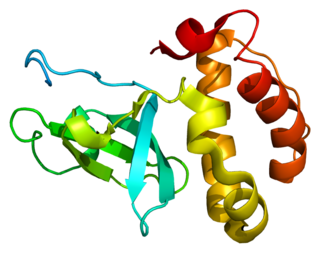
DNA (cytosine-5)-methyltransferase 3 beta, is an enzyme that in humans in encoded by the DNMT3B gene. Mutation in this gene are associated with immunodeficiency, centromere instability and facial anomalies syndrome.

Serine/threonine-protein kinase Nek2 is an enzyme that in humans is encoded by the NEK2 gene.
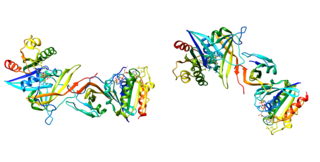
Kinesin-like protein KIF23 is a protein that in humans is encoded by the KIF23 gene.

Kinesin-like protein KIF1B is a protein that in humans is encoded by the KIF1B gene.

Centromere-associated protein E is a protein that in humans is encoded by the CENPE gene.

Kinesin-like protein KIF22 is a protein that in humans is encoded by the KIF22 gene.

Kinesin-like protein KIF2C is a protein that in humans is encoded by the KIF2C gene.

Kinesin-like protein KIF3A is a protein that in humans is encoded by the KIF3A gene.

Kinesin-like protein KIF20A is a protein that in humans is encoded by the KIF20A gene.

SWI/SNF-related matrix-associated actin-dependent regulator of chromatin subfamily E member 1-related is a protein that in humans is encoded by the HMG20B gene.

Kinesin-associated protein 3 (KAP3) is a protein that in humans is encoded by the KIFAP3 gene. It is a non-motor, accessory subunit which co-oligomerizes with the motor subunits KIF3A and KIF3B or KIF3C, to form heterotrimeric kinesin-2 motor proteins. Kinesin-2 KAP subunits were initially characterized in echinoderms and mice.

Kinesin-like protein KIF3B is a protein that in humans is encoded by the KIF3B gene. KIF3B is an N-type protein that complexes with two other kinesin proteins to form two-headed anterograde motors. First, KIF3B forms a heterodimer with KIF3A ; (KIF3A/3B), that is membrane-bound and has ATPase activity. Then KIFAP3 binds to the tail domain to form a heterotrimeric motor. This motor has a plus end-directed microtubule sliding activity that exhibits a velocity of ~0.3 μm/s a. There are 14 kinesin protein families in the kinesin superfamily and KIF3B is part of the Kinesin-2 family, of kinesins that can all form heterotrimeric complexes. Expression of the three motor subunits is ubiquitous. The KIG3A/3B/KAP3 motors can transport 90 to 160 nm in diameter organelles.

Sodium/bile acid cotransporter also known as the Na+-taurocholate cotransporting polypeptide (NTCP) or liver bile acid transporter (LBAT) is a protein that in humans is encoded by the SLC10A1 (solute carrier family 10 member 1) gene.
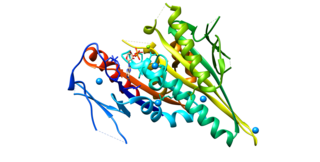
Kinesin-like protein KIFC1 is a protein that in humans is encoded by the KIFC1 gene.

Kinesin-like protein KIF3C is a protein that in humans is encoded by the KIF3C gene. It is part of the kinesin family of motor proteins.
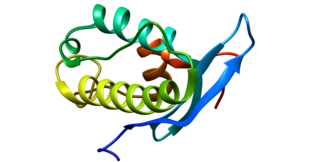
Kinesin family member 16B, also known as KIF16B, is a protein which in humans is encoded by the KIF16B gene.

Structural maintenance of chromosomes protein 2 (SMC-2), also known as chromosome-associated protein E (CAP-E), is a protein that in humans is encoded by the SMC2 gene. SMC2 is part of the SMC protein family and is a core subunit of condensin I and II, large protein complexes involved in chromosome condensation, overall organization. Several studies have demonstrated the necessity of SMC2 for cell division and proliferation.

Condensin-2 complex subunit H2, also known as chromosome-associated protein H2 (CAP-H2) or non-SMC condensin II complex subunit H2 (NCAPH2), is a protein that in humans is encoded by the NCAPH2 gene. CAP-H2 is a subunit of condensin II, a large protein complex involved in chromosome condensation.

Kinesin-like protein KIF11 is a molecular motor protein that is essential in mitosis. In humans it is coded for by the gene KIF11. Kinesin-like protein KIF11 is a member of the kinesin superfamily, which are nanomotors that move along microtubule tracks in the cell. Named from studies in the early days of discovery, it is also known as Kinesin-5, or as BimC, Eg5 or N-2, based on the founding members of this kinesin family.
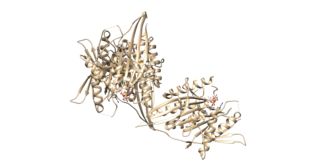
Kinesin family member 15 is a protein that in humans is encoded by the KIF15 gene.
























